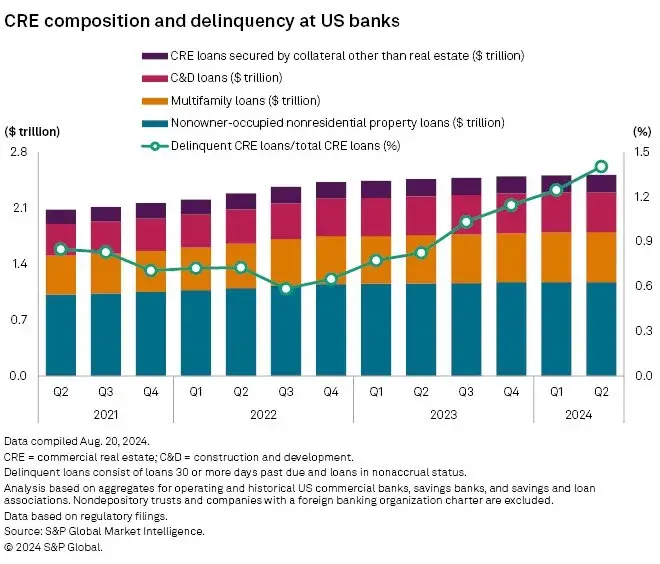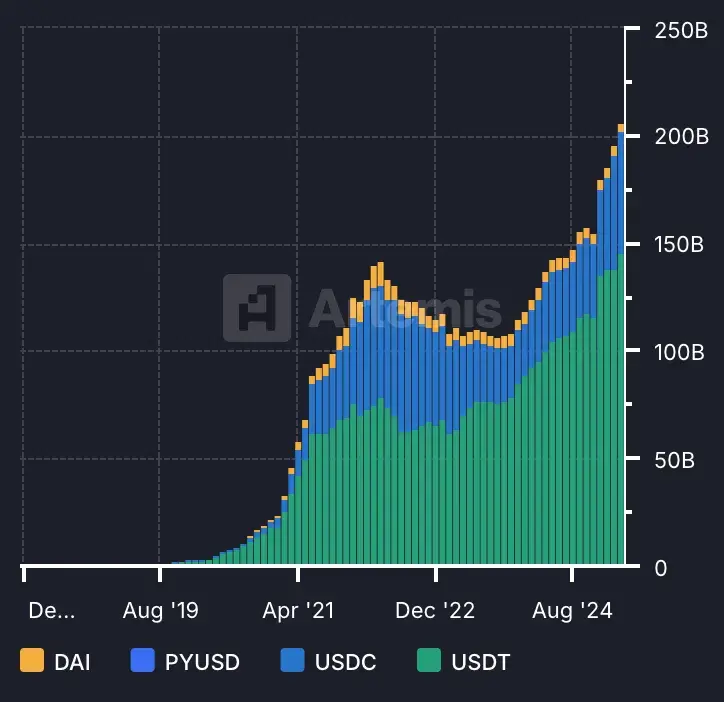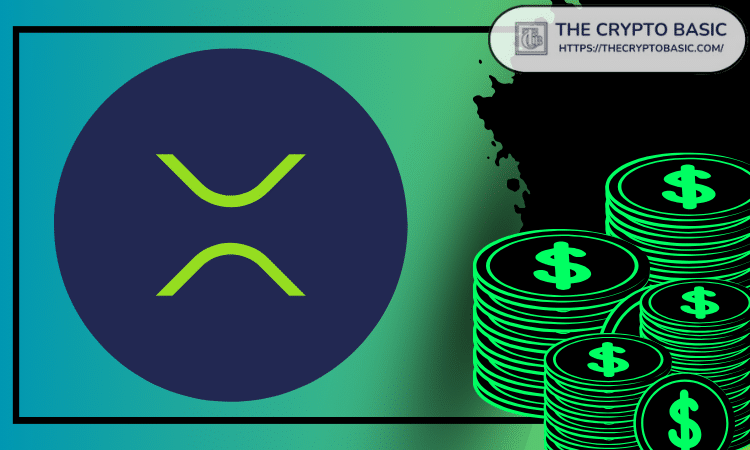原标题:《Why should we be bullish on the crypto market in the mid-to-long term? A bullish thesis》
author:DeFi Cheetah, Encryption KOL
Compiled by: Felix,
As previously predicted, the U.S. stock market will see a pullback of at least 20%, pulling the Bitcoin price back to around $50,000. The first goal has been achieved: U.S. stocks have made a 20% pullback with the VIX index at about 55, as Trump imposed tougher tariffs on many other countries. Bitcoin price fell to $74,000 at one point, more elastic than expected based on historical price trends.
Next, the Fed is expected to cut interest rates by June, followed by a bottoming out rebound in U.S. stocks and crypto markets. In fact, Trump has just made it clear that Fed Chairman Powell has cut interest rates. This article will explain in detail why Trump is so paranoid about rate cuts and why he is optimistic about the crypto market.
Two pressing problems caused by high interest rates
Two issues force the Fed to cut interest rates sharply in the coming months. First, this year’s “maturity wall” worth $9 trillion Treasury bonds(Note:Maturity Wall, refers to the maturity schedule of the overall bond market)Forced the Trump administration to do its best to seek interest rate cuts to save trillions of dollars in refinancing costs. However, in the Fed's view, the current inflation level leaves no room for a rapid rate cut. Therefore, the best explanation for the seemingly unreasonable radical policies and measures of the Trump administration (such as tariffs, the establishment of DOGE, etc.) is that they form a coordinated mechanism to try to use macro uncertainty to force the Fed to cut interest rates. Otherwise, the U.S. government will have to pay at least 3-4 times the interest after the rollout. In fact, the yield on two-year short-term Treasury bonds has been declining, reflecting the market's risk aversion sentiment and capital flows into Treasury bonds.

In the eyes of the Trump administration, the urgency of interest rate cuts can be explained by the following figure:

In fact, the surge in the Merrill Lynch Option Volatility Estimate Index (MOVE), which measures the volatility of interest rates in the U.S. Treasury market, can further demonstrate the possibility of the Federal Reserve's interest rate cut. The index is considered a representative of the Treasury maturity premium (i.e., the yield spread between long-term and short-term bonds). As the index rises, anyone engaged in U.S. Treasury or corporate bond financing transactions will be forced to sell due to higher margin requirements. If the MOVE index continues to rise, especially above 140, it may indicate extremely unstable markets and may force the Fed to stabilize Treasury and corporate bond markets by cutting interest rates, which are crucial to the proper functioning of the financial system. (Note: The last time the MOVE index soared above 140 was due to the bank failure in Silicon Valley – the largest bank failure since 2008.)

The second reason for the sharp rate cuts in the coming months is also due to the “maturity wall,” but this time refers to more than $500 billion in U.S. commercial real estate (CRE) loans due this year. Many CRE loans have been underwritten at lower interest rates during the pandemic and faced refinancing challenges in an environment where interest rates continue to rise, which may lead to higher default rates, especially for real estate with excessive leverage. In particular, the increasing popularity of home office has triggered structural changes, resulting in the high vacancy rate of houses after the epidemic. In fact, the massive default of potential CRE loans could lead to a surge in the MOVE index.
In the fourth quarter of 2024, the CRE loan default rate was 1.57%, up from 1.17% in the fourth quarter of 2023. Historical data show that interest rates above 1.5% are worrying, especially in a monetary tightening environment. Meanwhile, the office building’s value fell by 31% from its peak due to the vacancy rate of up to 20%, the capitalization rate continued to rise (about 7-8%), and the large amount of loans expired, and the value of the office building fell by 31% from its peak, and the risk of default also increased.

The logic here is: a high vacancy rate will reduce net operating income (NOI), lower debt repayment rate (DSCR) and debt yield, but will increase capitalization rate. High interest rates will exacerbate this, especially for loans due in 2025, refinancing at higher rates may be unsustainable. Therefore, if commercial real estate loans cannot be refinancing at reasonable low interest rates similar to those during the pandemic, banks will inevitably have more bad debts, which in turn may trigger a “domino” effect and more banks go bankrupt (recall the severity of the 2023 surge in interest rates led to bank banking such as Silicon Valley banks).
Given these two pressing issues arising from high interest rates, the Trump administration must take radical measures to cut interest rates as soon as possible. Otherwise, these debts must be extended, the U.S. government will face higher refinancing costs, and many commercial real estate loans may not be extended and cause a large number of bad debts.
Catalysts to drive the next bull market——Stable Coin
The biggest impact on the crypto market is market liquidity. But the factors that have the greatest impact on liquidity are (i) monetary policy and (ii) the popularity of stablecoins. Driven by dovish (moderate) monetary policy, the popularity of stablecoins can further catalyze capital inflows in the bull market. The upside of a bull market depends on the increase in the total supply of stablecoins. In the last bull market (2019-2022), the total supply of stablecoins increased 10 times from trough to peak, while it only grew about 100% from 2023 to early 2025, as shown in the figure below.

The following focus is on events that predict the rapid growth of stablecoin adoption rates in the next 1 year:
- Progress in U.S. Stablecoin Legislation: In the first quarter of 2025, the Senate Banking Committee approved the GENIUS Act in March, which outlines regulatory and reserve rules for stablecoin issuers. The bill aims to bring stablecoins into the mainstream financial system, reflecting the growing recognition of its role in the crypto market. In addition, the U.S. House of Representatives Financial Services Committee passed a stablecoin framework bill, the Stablecoin Act, which stipulates that any non-bank institution can issue stablecoins as long as it is approved by federal regulators. Regulatory transparency has been considered the most important factor in the adoption of stablecoins, thus affecting capital flows into the crypto industry through stablecoins.
- Accelerating institutional adoption: Fidelity invests in testing stablecoins pegged to the dollar in late March marking an important step forward for the traditional financial giant to enter the crypto space. Meanwhile, Wyoming announced plans to launch a state-backed stablecoin by July, aiming to be the first fully reserved token issued by U.S. entities.
- World Liberty Financial Stablecoin: Trump-related World Liberty Financial announced on March 25 that it plans to launch the USD1, a stablecoin pegged to the dollar, after the company raised $500 million through separate token sales. The move is in line with the Trump administration's policy of supporting stablecoins as a critical infrastructure for cryptocurrency trading.
- USDC Expands to Japan: On March 26, Circle and SBI Holdings launched USDC in Japan, making it the first stablecoin officially approved for use under the Japanese regulatory framework. This move reflects Japan's positive attitude to include stablecoins in its financial system, or to be a model for other countries.
- PayPal and Gemini advance stablecoin development: Throughout the first quarter, PayPal and Gemini consolidated their position in the stablecoin market. Adoption of PayPal’s PYUSD and Gemini’s GUSD has increased, PayPal leverages its payment network, while Gemini focuses on institutional clients. This intensifies competition in the US stablecoin issuer market.
- More Use Cases for Payroll Platform Rise: On March 24, Payroll Platform Rise expanded its services to provide stablecoin payments to international contractors in more than 190 countries. Employers can pay wages in stablecoins, and employees can withdraw cash in local currency.
- Circle's IPO: Circle has submitted an IPO application. If approved, Circle will become the first stablecoin issuer to be listed on the New York Stock Exchange. This will mark the official position of the stablecoin business in the United States and inspire more companies to explore the field, especially large institutions, as the stablecoin business relies more on institutional resources, distribution channels and business development.
Why is the Trump administration so active in supporting the development of stablecoins? This is consistent with the view in the first part: the collateral of stablecoins in circulation is mainly short-term U.S. Treasury bonds, so as the U.S. government extends trillions of dollars of maturing Treasury bonds this year, the more popular stablecoins are, the higher the demand for short-term Treasury bonds.
The market direction is clear: in the short term, it may experience market turmoil, with high volatility, and may even further decline from the current level. But in the medium term, it is expected that a significant rate cut in the context of dovish monetary policy, coupled with the popularity of stablecoins, may trigger another strong bull market, with a scale comparable to the previous cycle.
Now is approaching the ideal time to get good returns through investing in the crypto market.
















No comments yet